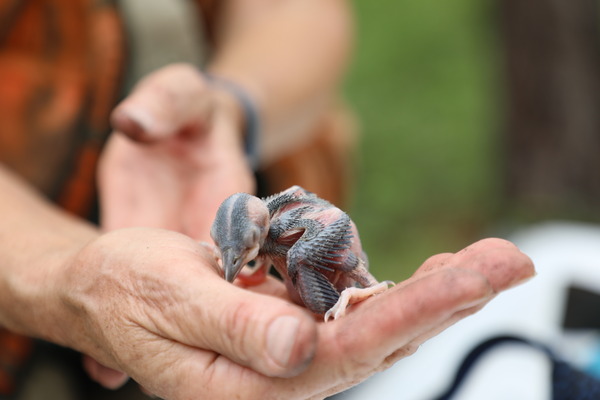Wildlife management and forest management go hand in hand. We offer assistance to landowners to help improve habitats for wildlife on their property.
Every property is unique in its approach to management, and different management practices will be needed to accomplish diverse landowner objectives. Although the practices listed below may not be applicable to every property, in the right situation, these management strategies can create and enhance wildlife habitat.
Streamside management zone (SMZ)
SMZs, also called forest buffers, green strips, or riparian zones, are forested areas adjacent to streams that are managed with specific attention to water resource protection.
SMZ’s not only help protect water quality, but also provide excellent habitat and travel corridors for many wildlife species. Texas Forestry Best Management Practices recommend a minimum width of 50 feet on both sides of intermittent and perennial streams. However, if you are interested in wildlife management you may consider extending this width to increase wildlife use. sides of intermittent and perennial streams, however, if you are interested in wildlife management you may consider extending this width to increase wildlife use.
Windbreaks
Windbreaks are trees and shrubs systematically planted adjacent to fields, homesteads, or feedlots as a barrier to reduce or redirect the wind, or feedlots as a barrier to reduce or redirect the wind.
Wind breaks enhance aesthetics, increase land value, reduce soil erosion, protect buildings and equipment, and provide food and cover for wildlife. Our West Texas Nursery grows seedlings that are well-suited for use in wildlife and windbreak plantings.
Supplemental food plots
Supplemental food plots are areas where adapted annual and perennial plants are established for wildlife.
These areas provide a highly nutritious food source and shelter during critical periods of the year, like during dry summer months when plant growth slows. High protein supplemental forage is especially important for white-tail deer management.
The shape, size, location, and percentage of the total land area of the plot being considered should be based on the requirements for the type of wildlife that you would like to accommodate. If you are interested in wildlife management, you should plant at least 1% of your property in winter and summer food plots. Planting a variety of forage and excluding livestock from your supplemental food plots are a great way to help ensure plant survival.
Fertilizer can greatly improve forage quality in preferred plants such as honeysuckle, greenbrier, and blackberry. Fertilized plants remain favorable and have higher nutrient levels longer into the summer than the surrounding non-fertilized vegetation. Applying a balanced fertilizer in the spring, and then an ammonium nitrate or a high nitrogen fertilizer at 60-day intervals during the growing season often yield the best results.
The Natural Resources Conservation Service, Texas A&M Agrilife Extension Service, Texas Parks and Wildlife Department, and local seed dealers can provide guidance on food plot mixtures suitable for your area. A soil test should be conducted prior to planting.
Texas wildscapes
Texas wildscapes is a habitat restoration and conservation plan for rural and urban areas. It enables Texans to contribute to wildlife conservation by developing wildlife habitats where they live, work, and play. Small changes to the landscape can aid in restoring habitats for birds, insects, reptiles, and small mammals on their properties.
Prescribed fire
Ecosystems in Texas have evolved through fire, however, not all fires are alike. Prescribed fires are specifically “prescribed” under certain conditions to control some plant species while encouraging the growth of others. Depending on the objective of the property, a Certified and Insured Prescribed Burn Manager can tailor a prescribed fire prescription to your property to maximize the benefits of the treatment and best achieve your land management goals. The general benefits of prescribed burning include:
- Enhancing habitat diversity by increasing plant quality/vigor, while increasing the quality of wildlife foods and suppressing non-native grasses.
- Increases nutrient cycling by fixing nitrogen in the soil from burn debris, resulting in a fertilization effect.
- Controlling invasive vegetation which is not fire tolerant
- Opening the vegetative overstory to allow light penetration to the soil surface for forb, browse, and grass production.
Thinning and harvesting
In addition to increasing the health of your forest by reducing competition between trees – allowing for further growth of remaining species and reducing the risk of insect infestation – thinning and harvesting creates openings in the forest that promotes the growth of food sources for wildlife, creates habitat for deer and songbirds, and encourages forest stand conditions favored by other species.
The first step to accomplishing any of the management practices listed above is to discuss the goals that you have for your property with a Texas A&M Forest Service Forester, or a professional land management service provider.
